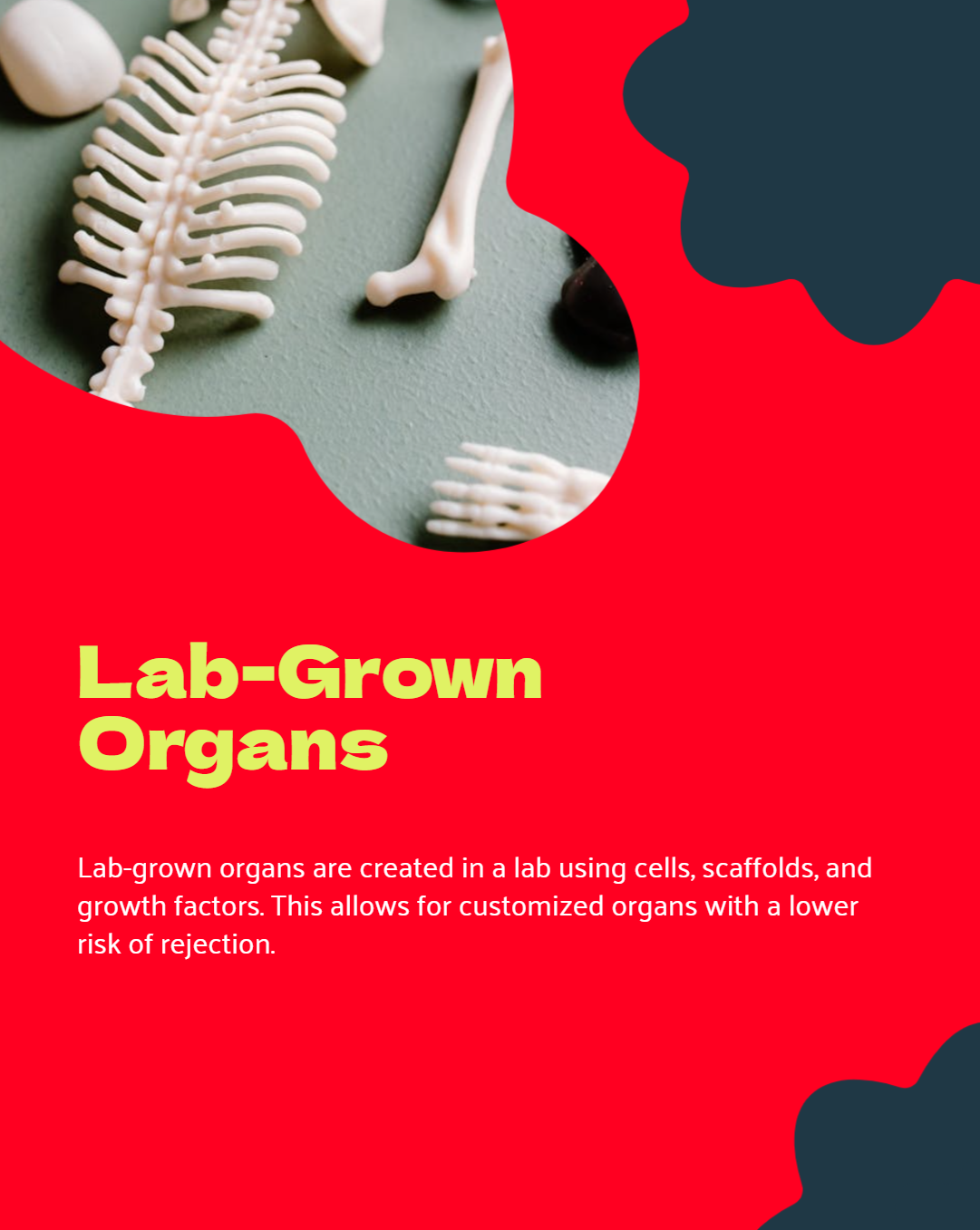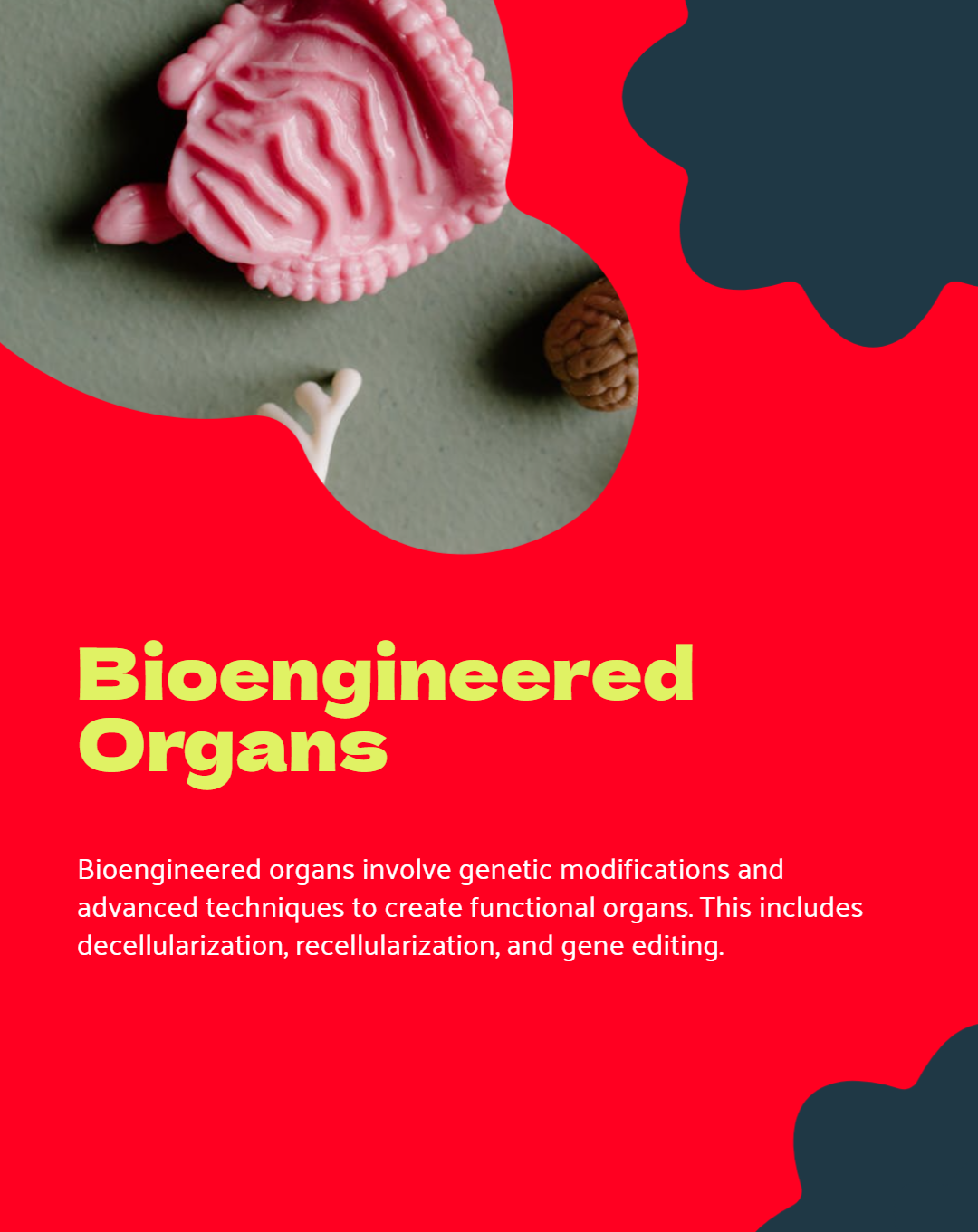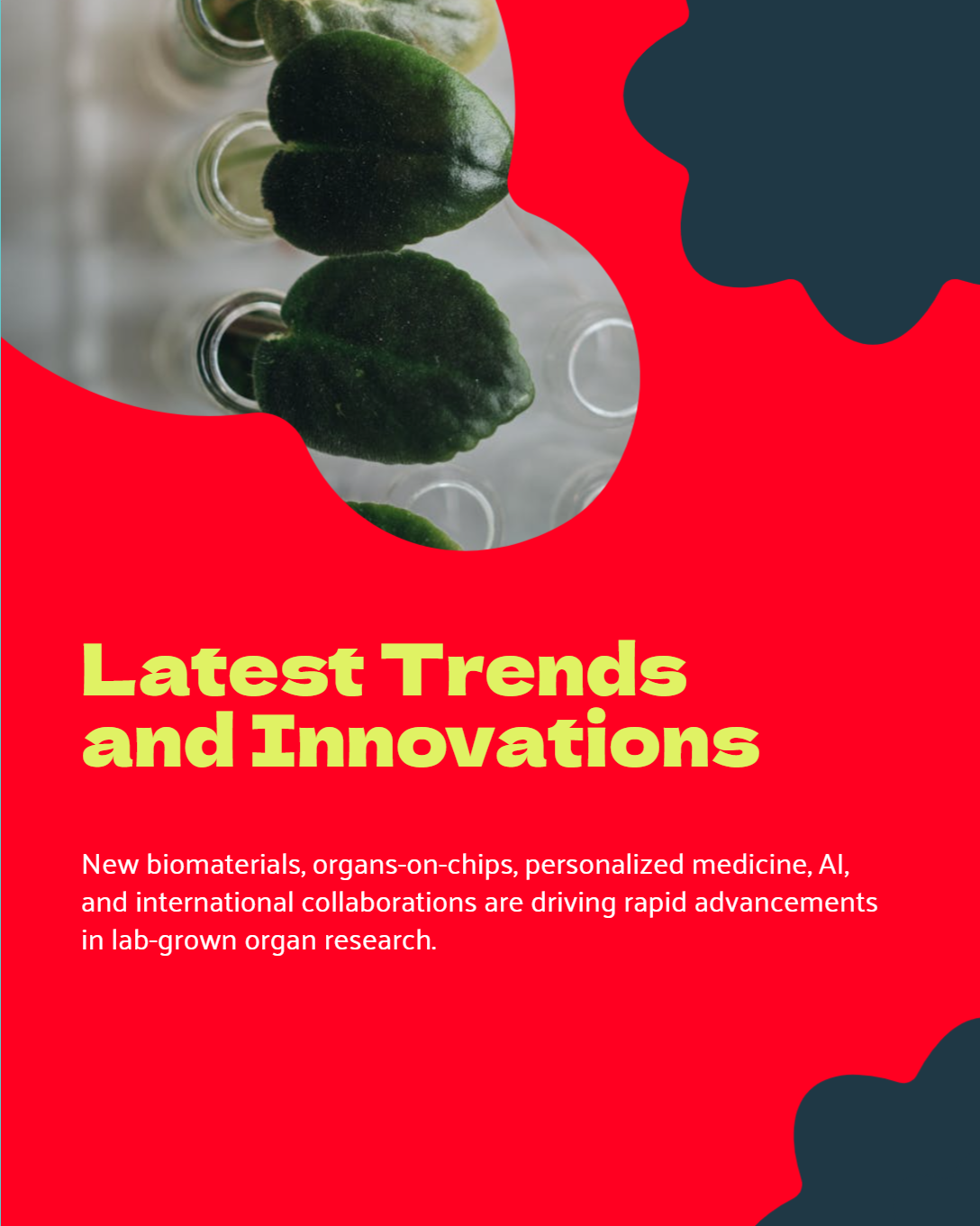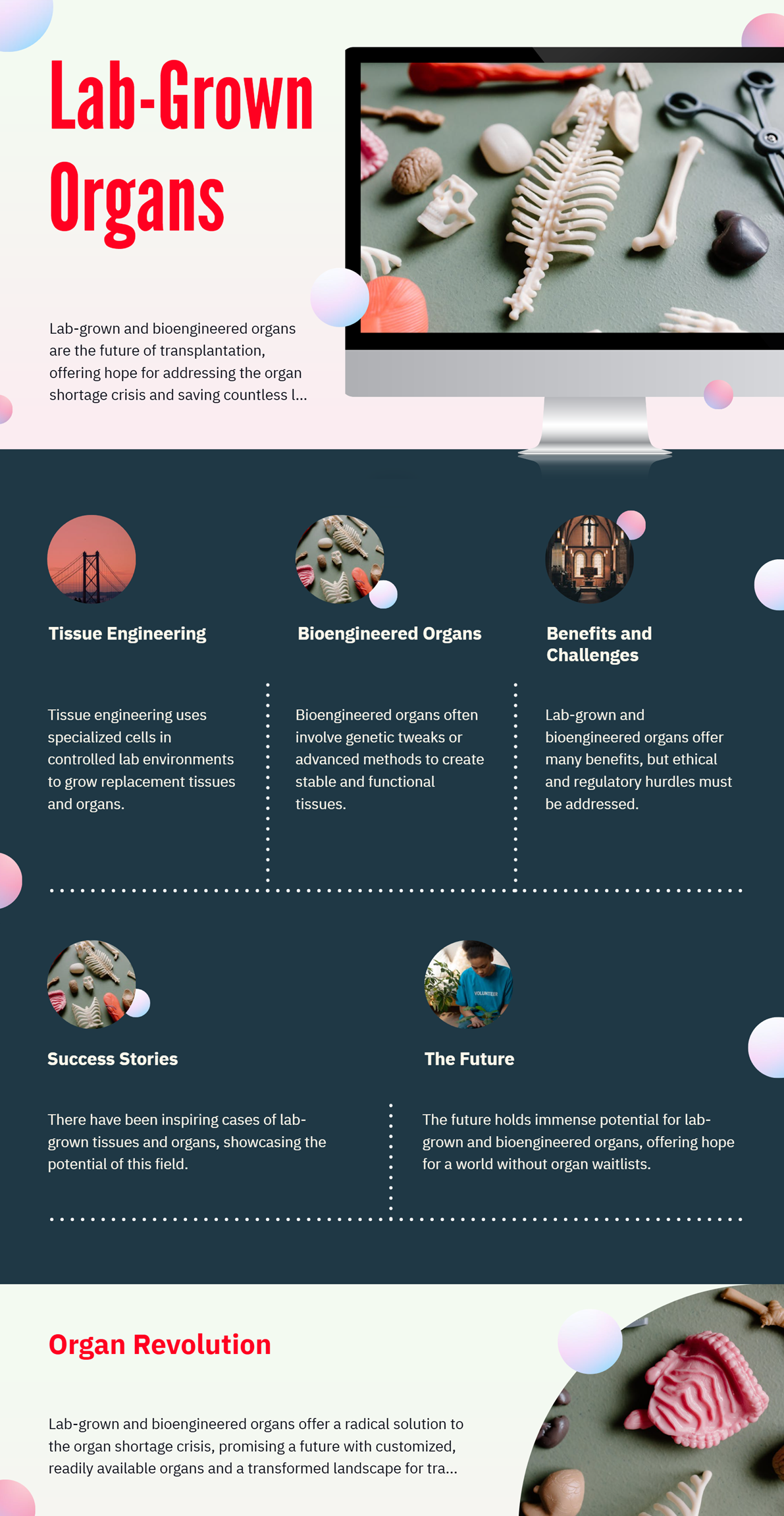Organ transplantation has always been a life-saving medical breakthrough. Yet, the shortage of donor organs remains a critical obstacle. Every day, patients around the world wait anxiously, hoping for a match that may never come. Recently, there has been a surge of interest in lab-grown and bioengineered organs. These innovations promise fresh possibilities to address organ shortages and reduce wait times. In this article, we explore the science, benefits, challenges, and future directions of lab-grown and bioengineered organs.
For many decades, traditional organ transplantation has saved countless lives. Surgeons have refined techniques for harvesting organs, storing them, and placing them into recipients with increasing success rates. But as demand continues to outpace supply, scientists have looked for new ways to create viable organs. Lab-grown and bioengineered organs are at the forefront of this push for progress, offering hope to those with failing hearts, livers, kidneys, and more.
The excitement around lab-grown organs lies in their potential to be customized. By using a patient’s own cells, there is a chance to lower the risk of rejection and cut down on the need for lifelong immunosuppressive drugs. At the same time, bioengineering methods try to mimic nature’s complexity. The goal is to create organs that function like the original, maintain healthy blood flow, and connect properly within the body.
Lab-grown organs, sometimes called “tissue-engineered organs,” are structures cultivated in a laboratory setting. To produce these organs, scientists combine various elements, including cells, supportive materials, and growth-promoting factors. The hope is to build replacement tissues that do everything real organs can do.
Tissue Engineering
Tissue engineering is a field that blends science, medicine and engineering. Experts grow specialized cells in controlled lab environments. These cells can come from patients or from other donor sources. The process looks like this:
1. Cell Collection: A sample of tissue is taken, often a small biopsy from the patient.
A Table Showing Key Steps in Tissue Engineering
|
Step |
Action |
Potential Impact |
|||
|---|---|---|---|---|---|
|
|
|
|||
|
|
|
|||
Seeding |
|
|
|||
|
|
|
|||
|
|
|
3 Types of Cell Sources in Regenerative Medicine
In regenerative medicine and cell therapy, the source of cells plays a crucial role in determining treatment outcomes. Here are the three primary types of cell sources:
a. Autologous Cells (Self-Derived)
Cells are harvested from the same individual who will receive the treatment.
b. Allogeneic Cells (Donor-Derived)
Cells come from a genetically different individual of the same species.
c. Xenogeneic Cells (Cross-Species)
Cells are obtained from a different species, often used in experimental therapies.
2. Culture of Cells: The cells are placed in special lab dishes where they multiply. This process can occur in two ways:
a. conventional monolayer cultures, where cells grow in a single layer, or
b. three-dimensional cultures, which better mimic natural tissue environments.
3. Scaffold Construction: Scientists craft supportive scaffolds made of synthetic or natural biomaterials like collagen. These scaffolds act as a framework for cells.
4. Seeding and Culturing: The cells are seeded onto the scaffolds. Growth factors and nutrients are introduced to help them develop. Over time, the cells grow and shape themselves into living tissue.
5. Maturation: As cells multiply, they form a network that resembles a functional organ or tissue.
When tissue-engineered organs are ready, they may be transplanted into the recipient. If the cells match the patient, the chance of rejection drops.
Scaffolds, Cells, and Growth Factors
The key ingredients for lab-grown organs are scaffolds, living cells, and growth factors. Scaffolds act like the skeleton of the growing organ. They are usually made from materials that break down in the body once the tissue is stable. Living cells could be stem cells that develop into various specialized cells, like liver or kidney cells. Growth factors are the signaling molecules that tell cells when and how to grow. Without precise control of these factors, the developing tissue might not gain the right functions.

Bioengineered organs often include genetic tweaks or advanced methods to produce stable, functional tissues. In some cases, researchers start with the framework of an animal organ, removing the animal’s cells and repopulating the structure with human cells. This approach, known as “decellularization and recellularization,” aims to keep the organ’s shape intact while reducing immune rejection.
Revolutionary Techniques
One cutting-edge method of bioengineering is “gene editing.” By using tools like CRISPR, scientists can edit genes in cells before placing them into the organ scaffold. This helps ensure the organ is better adapted to the human body and less likely to cause an immune response. Another fascinating approach is developing hybrid organs, where certain sections of tissue are combined to achieve improved functionality. Imagine a liver that contains specialized cells from multiple donors but is harmonized to reduce rejection risks.
The Role of 3D Bioprinting
3D bioprinting has become a game-changer. Traditional 3D printing involves plastics, metals, or ceramics. In the case of bioprinting, “bioink” containing biological materials is printed layer by layer into complex structures. By controlling the pattern and density of cells, scientists can mimic the intricate layout of blood vessels and tissues. This technology allows organ designs to be highly tailored to each patient, potentially boosting the organ’s success after transplantation.
Lab-grown and bioengineered organs hold incredible promise, but they also face significant hurdles. Let’s break down both sides of this groundbreaking technology.
Addressing the Organ Shortage Crisis
The leading benefit of lab-grown and bioengineered organs is their potential to solve the organ shortage crisis. Hospitals have long waiting lists. Many patients never get the organs they need. By growing organs in a lab, we can in theory produce an unlimited supply, tailored to each patient. This shift could save many lives.
Another advantage is lowering the risk of rejection. If researchers use a patient’s cells, the transplanted organ is recognized as “self.” This reduces the demand for immunosuppressive drugs, which can have serious side effects. Patients might enjoy a better quality of life without worrying about infections and complications associated with long-term medication use.
Managing Ethical and Regulatory Hurdles
While the potential is huge, ethical and regulatory concerns demand attention. Bioengineering often calls on advanced genetic modifications. This raises questions about safety, long-term outcomes, and possible unintended consequences. Regulators want proof that these engineered organs work properly and do not harm recipients. Researchers must perform thorough trials and keep track of recipients over the long term.
There are also concerns about animal welfare. In certain cases, scientists grow human cells in animal hosts or use pig or cow organs for scaffolds. Although this might pave the way for more accessible transplants, it sparks debate about the ethical treatment of animals. Moreover, religious and cultural beliefs can factor into how people view these procedures. Education, dialogue, and transparent research will be crucial for wide acceptance.
Though lab-grown and bioengineered organs are still in development, there have been inspiring cases. Scientists have succeeded in growing small-scale tissues like bladders, windpipes, and blood vessels. Patients who received lab-grown bladders, for instance, experienced improved organ function with minimal complications. In some experiments, partial liver tissue was grown and successfully transplanted into animals, offering hope for future human trials.
One notable story is that of tissue-engineered windpipes created for patients with severe airway problems. By using a patient’s own stem cells on a scaffold shaped like a windpipe, surgeons provided a functional airway that integrated well into the recipient’s body. These achievements serve as stepping stones for more complex organ engineering in the future.
Traditional organ transplantation has a long track record of saving lives, but the donor shortage remains a bottleneck. Combining tried-and-true transplant methods with lab-grown alternatives could offer a balanced solution. For instance, in borderline cases where a traditional organ is partially functional, lab-grown tissue can be used to repair or enhance the organ rather than replace it entirely. This hybrid approach merges the reliability of existing procedures with the customization of tissue engineering.
Moreover, ongoing clinical trials are exploring ways to integrate engineered tissues for partial organ failure. When a patient has a failing heart valve, doctors can try tissue patches grown in the lab rather than waiting for an entire replacement. These incremental upgrades might reduce the risks associated with full transplants and still improve quality of life.
Like any new medical innovation, lab-grown and bioengineered organs come with risks. Researchers do not yet have decades of data on long-term effects. Unexpected immune reactions are still possible. Even if the organ is built from a patient’s own cells, the scaffold material or growth factors might trigger inflammation. Ensuring that the tissues form stable blood vessels is another major hurdle. Without proper vascularization, engineered organs can fail or become necrotic. Additionally, there is a potential risk of abnormal tissue growth or tumor formation, which could arise as a result of uncontrolled cell proliferation during the development process.
Cost is another factor. At present, lab-grown organs are expensive to produce. Specialized labs, advanced equipment, and skilled personnel are required. Over time, as these methods become more common, costs may drop. Still, there is a need for broader policies that can make lab-grown and bioengineered organs accessible to all, not just those who can pay for cutting-edge treatments.
Researchers also worry about transparency and hype. When there is a wave of excitement around a new medical breakthrough, it is easy to overlook downsides. Scientists and doctors must work together to provide honest information, set realistic timelines, and ensure that patients understand possible risks.


We picture a future where lab-grown and bioengineered organs are as common as donated ones. Imagine an organ transplant list that isn’t plagued by endless waits and shortages. Or a scenario where a child born with a genetic disorder receives an engineered organ designed exactly for their body. This vision is ambitious, but steady progress offers optimism. As more success stories emerge and technology improves, the possibility of living in a world without organ waitlists seems less like science fiction and more like an inevitable next step.
At the same time, we must remember that scientific breakthroughs often take years—if not decades—before they become mainstream. Research must be thorough. Every step must be regulated and evaluated. Yet as each milestone is met, we move closer to a day where no one is turned away due to the lack of a suitable organ donor.
Lab-grown and bioengineered organs promise a radical change in how we approach organ failure and transplantation. By harnessing tissue engineering, genetic modification, and 3D bioprinting, scientists hope to overcome donor shortages, reduce rejection risks, and save countless lives. Challenges remain, including high costs, ethical debates, and uncharted regulatory paths. Still, the advancements so far hint at a new era of transplantation. As these technologies mature, we anticipate a world in which custom-made organs are an option for those in need, reducing wait times and transforming the future of transplant medicine.
1. How soon will lab-grown organs be widely available?
Widespread availability depends on further research, clinical trial results, and regulatory approvals. Some simpler tissues may become routine in a few years, but more complex organs might take longer.
2. Do lab-grown organs have a lower rejection rate?
They can. When patient-derived cells are used, the risk of rejection is significantly reduced. However, scaffolds or other materials might still trigger immune responses, so research is ongoing.
3. Are bioengineered organs safe for children?
Potentially, yes. Children could benefit greatly if their own cells are used to create a perfectly matched organ. But clinical trials must confirm long-term safety and effectiveness for pediatric use.
4. Could lab-grown organs help people with rare diseases?
Yes. In many rare diseases, finding a donor match is particularly tough. Lab-grown or bioengineered organs might be tailored to each patient’s specific genetic needs, offering a new chance for treatment.
5. Will insurance cover the cost of lab-grown and bioengineered organs?
That will vary by location and by insurance provider. As these procedures become more common and proven safe, coverage is likely to expand, but it may take time for policies to catch up with technology.
 21.03.2025
21.03.2025